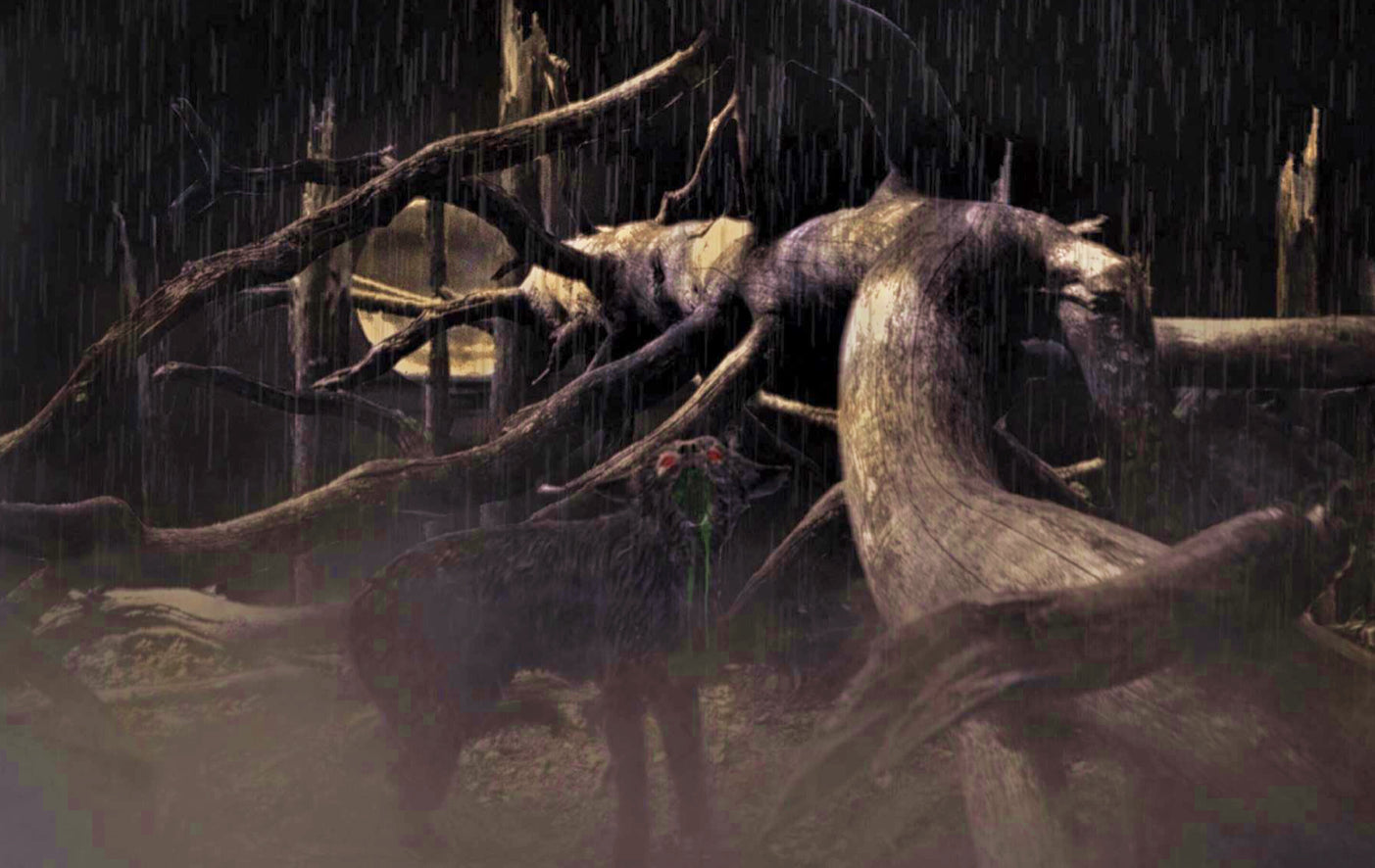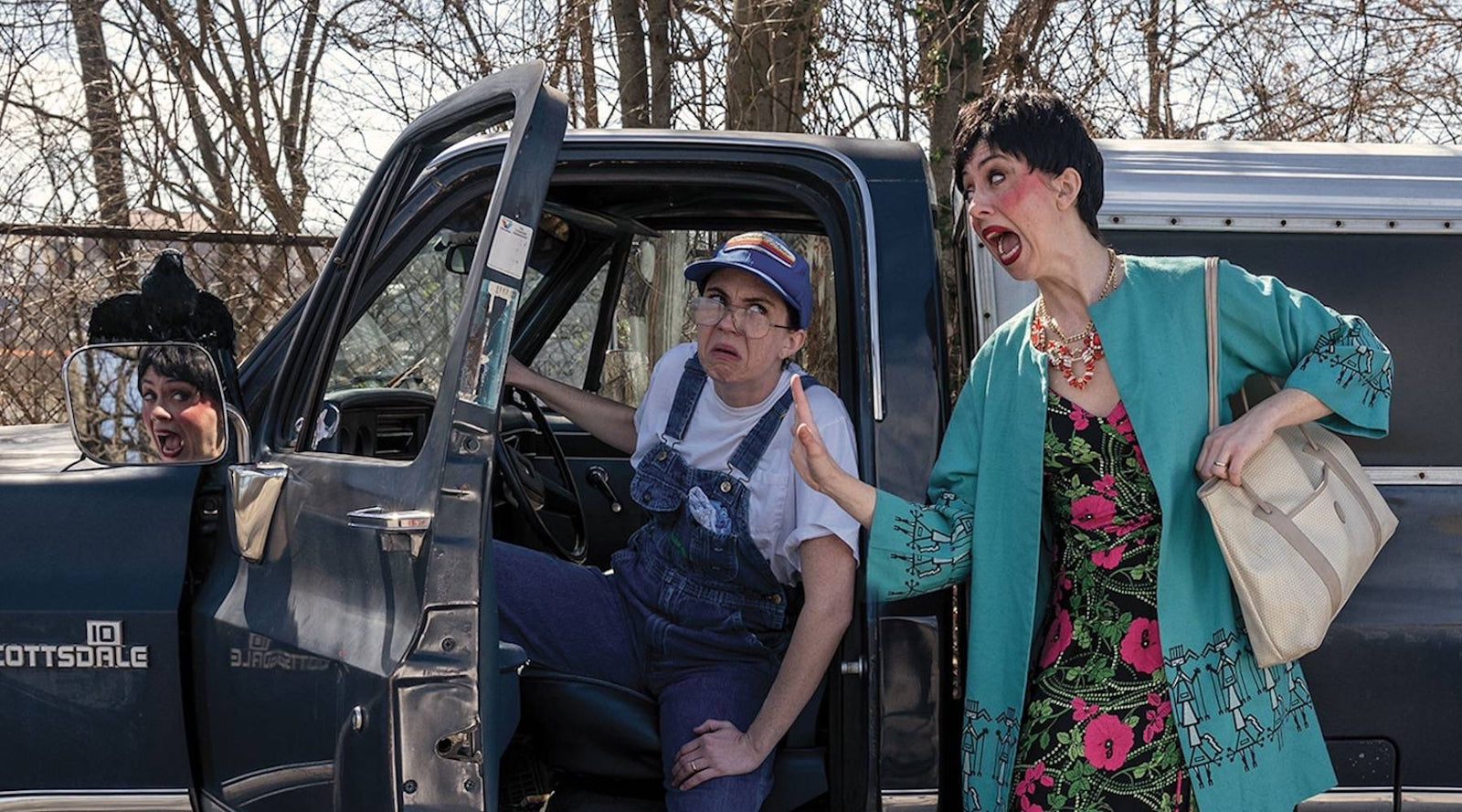
Image courtesy of Luke Bauserman
Combing everything from an old blues tune to Appalachian folklore, today's guest blogger—Luke Bauserman—finds inspiration in ghostly dogs. Here, he explains the common thread between old stories about canines and shares one that has spooked mountain people for more than a century.
***
In 1937, Robert Johnson recorded one of the most haunting blues songs of all time, “Hellhound on My Trail.” While experts debate the exact meaning of Johnson’s lyrics, the imagery is chilling. The first time I heard the song, I immediately imagined a beast like the Hound of the Baskervilles chasing a blues singer through the backwoods of Mississippi.
The association between dogs and the underworld is very widespread in ancient folklore and has continued into modern times. In ancient Egypt and Rome, fearsome dogs guarded the gates to the underworld. The British Isles have a rich tradition of “black dog” lore. Such critters are associated with death, bad omens, the Devil, and crossroads.
It’s then no surprise that when Europeans settled in the mountains of Appalachia, they brought their folk tales with them. In "Virginia Folk Legends," Thomas E. Barden writes that during the New Deal, researchers employed by the Virginia Writers’ Project gathered twenty-one narratives of supernatural and/or “devil” dogs in their collecting, most of them from Appalachia and all of them from mountainous regions of the state. One striking aspect of the stories is how similar their descriptions of ghostly dogs are. “The dogs are always large and black, and they have remarkable eyes, which are variously described as being red, ‘as big a saucers,’ and ‘shining like balls of fire.’”
In writing my novel "Some Dark Holler," I spent a lot of time hunting down and reading these “devil dog” stories. My favorite one was “The Black Dog of the Blue Ridge,” recorded by Mrs. R.F. Herrick in 1907. In it, we meet a supernatural black dog who is both a terrifying creature and a character worthy of sympathy. This story inspired me to take a similar approach with Sampson, the hellhound in "Some Dark Holler."
The below story also appears in Six Tales from Sixmile Creek, a free book of folklore that inspired Luke's novel.
In Botetourt County, Virginia, there is a pass that was much traveled by people going to Bedford County and by visitors to mineral springs in the vicinity. In the year 1683, the report was spread that at the wildest part of the trail in this pass there appeared at sunset a great black dog, who, with majestic tread, walked in a listening attitude about two hundred feet and then turned and walked back. Thus he passed back and forth like a sentinel on guard, always appearing at sunset to keep his nightly vigil and disappearing again at dawn. And so the whispering went with bated breath from one to another, until it had traveled from one end of the state to the other.
Parties of young cavaliers were made up to watch for the black dog. Many saw him. Some believed him to be a veritable dog sent by some master to watch; others believed him to be a witch dog. A party decided to go through the pass at night, well armed, to see if the dog would molest them. Choosing a night when the moon was full they mounted good horses and sallied forth. Each saw a great dog larger than any dog they had ever seen, and, clapping spurs to their horses, they rode forward. But they had not calculated on the fear of their steeds. When they approached the dog, the horses snorted with fear, and in spite of whip, spur, and rein gave him a wide berth, while he marched on as serenely as if no one were near. The party was unable to force their horses to take the pass again until after daylight. Then they were laughed at by their comrades to whom they told their experiences. Thereupon they decided to lie in ambush, kill the dog, and bring in his hide.
The next night found the young men well hidden behind rocks and bushes with guns in hand. As the last ray of sunlight kissed the highest peak of the Blue Ridge, the black dog appeared at the lower end of his walk and came majestically toward them. When he came opposite, every gun cracked. When the smoke cleared away, the great dog was turning at the end of his walk, seemingly unconscious of the presence of the hunters. Again and again they fired, and still, the dog walked his beat, and fear caught the hearts of the hunters, and they fled wildly away to their companions, and the black dog held the pass at night unmolested.
Time passed, and year after year went by, until seven years had come and gone, when a beautiful woman came over from the old country, trying to find her husband who eight years before had come to make a home for her in the new land. She traced him to Bedford County, and from there all trace of him was lost. Many remembered the tall, handsome man and his dog. Then there came to her ear the tale of the vigil of the great dog of the mountain pass, and she pleaded with the people to take her to see him, saying that if he was her husband’s dog, he would know her.
A party was made up, and before night they arrived at the gap. The lady dismounted and walked to the place where the nightly watch was kept. As the shadows grew long, the party fell back on the trail, leaving the lady alone, and as the sun sank into his purple bed of splendor the great dog appeared. Walking to the lady, he laid his great head in her lap for a moment, then turning he walked a short way from the trail, looking back to see that she was following. He led her until he paused by a large rock, where he gently scratched the ground, gave a long, low wail, and disappeared. The lady called the party to her and asked them to dig. As they had no implements, and she refused to leave, one of them rode back for help. When they dug below the surface, they found the skeleton of a man and the hair and bones of a great dog. They found a seal ring on the hand of the man and a heraldic embroidery in silk that the wife recognized. She removed the bones for proper burial and returned to her old home. It was never known who had killed the man. But from that time to this the great dog, having finished his faithful work has never appeared again.
Source: Herrick, Mrs. R. F. “The Black Dog of the Blue Ridge.” Journal of American Folklore 20 (1907): 151-52.














